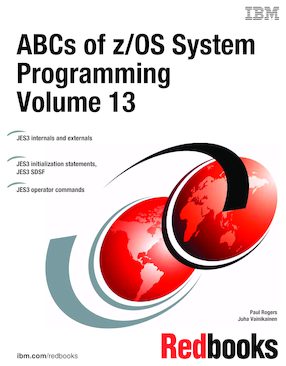
Published on 27 January 2012, updated 07 February 2012
Read in Google Books Order hardcopy
Share this page:
ISBN-10: 0738436259
ISBN-13: 9780738436258
IBM Form #: SG24-7717-01
Authors: Paul Rogers and Juha Vainikainen
Abstract
A major goal of operating systems is to process jobs while making the best use of system resources. Thus, one way of viewing operating systems is as resource managers. Before job processing, operating systems reserve input and output resources for jobs. During job processing, operating systems manage resources such as processors and storage. After job processing, operating systems free all resources used by the completed jobs, making the resources available to other jobs. This process is called resource management.
There is more to the processing of jobs than the managing of resources needed by the jobs. At any instant, a number of jobs can be in various stages of preparation, processing, and post-processing activity. To use resources efficiently, operating systems divide jobs into parts. They distribute the parts of jobs to queues to wait for needed resources. Keeping track of where things are and routing work from queue to queue is called workflow management, and is a major function of any operating system.
JES3 considers job priorities, device and processor alternatives, and installation-specified preferences in preparing jobs for processing job output. This IBM® Redbooks® publication describes a JES3 environment that includes the following:
- Single-system image
- Workload balancing
- Availability
- Control flexibility
- Physical planning flexibility.
Table of Contents
Chapter 1. Job entry subsystem (JES3)
Chapter 2. Spool data sets and checkpoint
Chapter 3. JES3 job flow and scheduling
Chapter 4. JES3 spool data management
Chapter 5. JES3 initialization
Chapter 6. JES3 input service
Chapter 7. Converter/interpreter processing
Chapter 8. Main device scheduling (MDS)
Chapter 9. JES3 job scheduling - GMS
Chapter 10. WLM batch initiator management
Chapter 11. JES3 output processing
Chapter 12. JES3 and multisystem consoles
Chapter 13. MVS System Logger/JES3 DLOG
Chapter 14. RJP and NJE
Chapter 15. JES3 dynamic support programs
Chapter 16. Spool partitioning and spool recovery
Chapter 17. JES3 Monitoring Facility (JMF)
Chapter 18. System Display and Search Facility (SDSF) in the JES3 environment
Appendix A. SDSF ISFPARMS default definitions
Appendix B. SDSF REXX and SDSF in batch examples